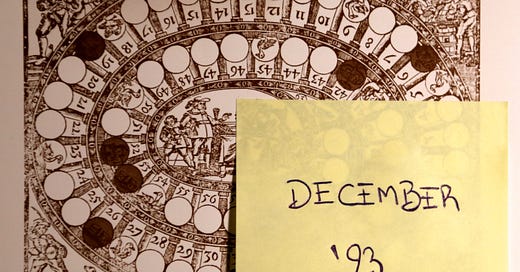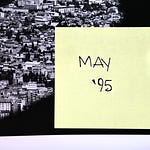December 1993.
Following the destruction of Stari Most, nothing is the same in Bosnia and Herzegovina [you can listen to the latest episode of BarBalkans - Podcast here].
No one can stop the war, because the three warring parties - Bosniaks, Bosnian Serbs and Bosnian Croats - have no interest in finding a solution for peace.
There is not even a positive momentum on the diplomatic level at the Conference for the Former Yugoslavia, despite the new presence of the European Union in Geneva.
Everything is blocked, waiting for political developments on two political arenas. Serbia and Russia.
The “Orthodox brothers” are back
Just like in December 1992, the real winner of the parliamentary elections held on 19 December 1993 is the Serbian President, Slobodan Milošević.
Even if his Socialist Party of Serbia does not reach the absolute majority (123 seats out of 250), it is helped by 6 MPs from New Democracy, who break the center-right coalition Democratic Movement of Serbia.
The elections in Serbia intersect with the crucial renewal of the State Duma in Russia, on December 12.
The President of the Russian Federation, Boris El’cin, has to face the “red-brown” opposition, the communist and imperialist forces. The new leading force in Parliament (106 seats out of 450) calls for the revival of the Empire and considers the Bosnian issue as domestic politics.
This is how - not only in Belgrade, but especially in Banja Luka - the fire of “orthodox brotherhood” is renewed.
The President of Republika Srpska, Radovan Karadžić, calls for of a union of Orthodox-majority countries together with Russia, giving birth to the «Slavic cultural revolution» and to a new «center of resistance to the Western world».
No truce on Christmas day
This new flare-up of nationalist and anti-Western rhetoric on the “orthodox” side forces the U.S. administration led by President Bill Clinton to take more interest in the Balkan issue.
The new approach based on territorial integrity is linked to the risk that the United States will be perceived as powerless in the face of the war in Bosnia. Moreover, President Clint wants to prevent the course of events as reported by U.S. intelligence.
The partition of Bosnia and Herzegovina into three entities (according to all the peace plans presented in the last year) will probably result in the creation of a Greater Serbia, a Greater Croatia and a Greater Albania.
The latest meeting between Serbian President Milošević and Croatian President, Franjo Tuđman, on December 20-21 in Geneva seems to prove this scenario. The two leaders agree on the partition of Bosnia and Herzegovina along the lines drawn by the new Juppé-Kinkel Plan.
However, the plan is rejected by the Bosnian President, Alija Izetbegović, because it implies the break-up of the Republic into many small enclaves and it is too vague on the status of the cities of Sarajevo and Neum.
The only real result achieved at the latest session of the Conference for the Former Yugoslavia is not respected either. No one is really willing to implement the Christmas truce agreed between the warring parties. On December 25, five citizens die under the bombs in Sarajevo.
Meanwhile, in New York, the UN General Assembly passes a Resolution that urges the Security Council to lift the arms embargo on the government of the Republic of Bosnia and Herzegovina.
The United States votes in favor, thanks to President Clinton’s change of attitude. The European allies abstain, as they are confident that the new peace plan - with no real hope to be implemented on the ground - will be enough.
If you know someone who can be interested in this newsletter, why not give them a gift subscription?
Here is the archive of BarBalkans - Podcast:
And here you can find a summary of the past years:
















Share this post